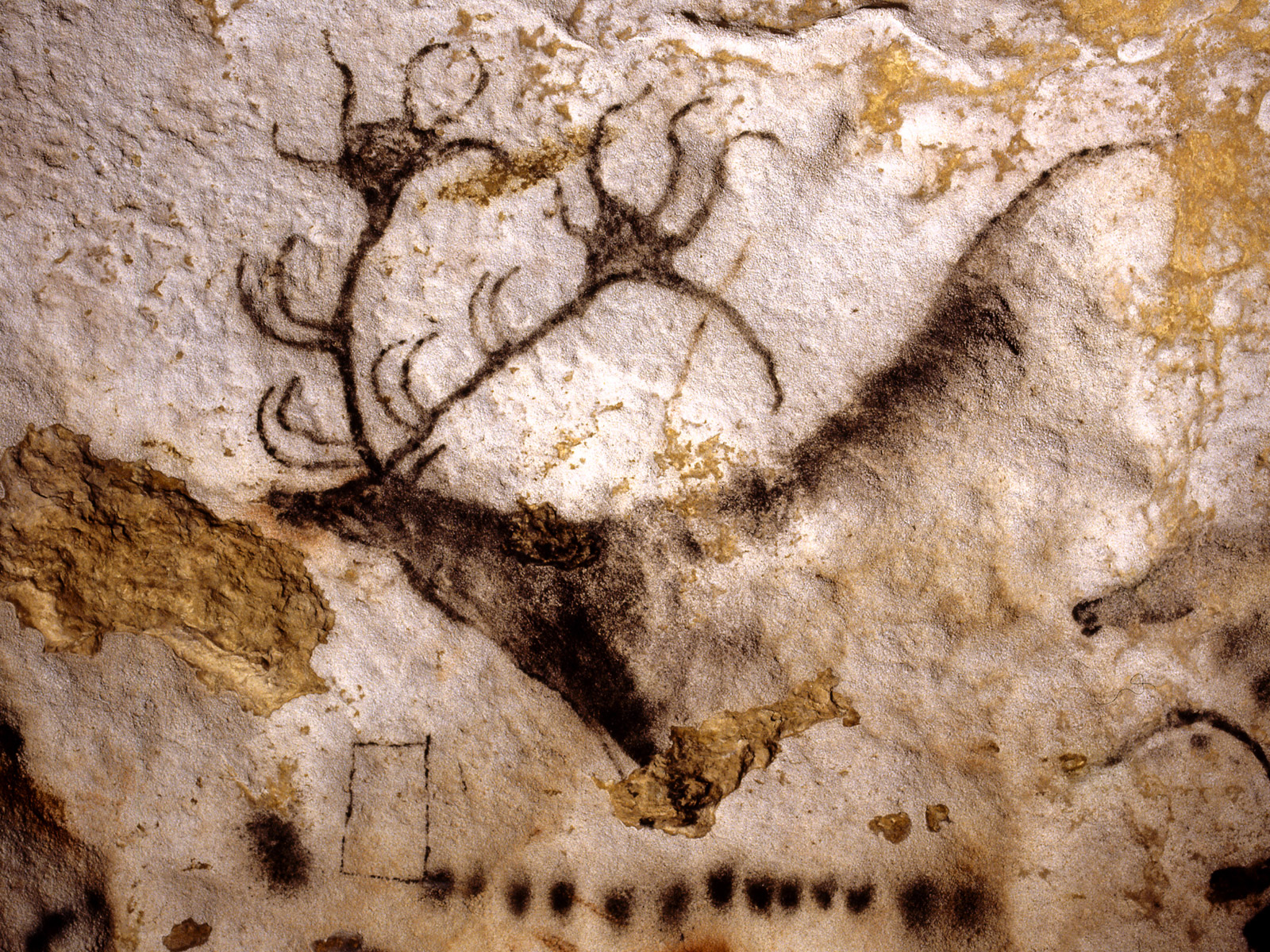The Lascaux Caves are near the French village of Montignac, in the Dordogne region. In those caves are some of the earliest cave art ever done.
A group of boys discovered the caves only in 1940. Before that, the cave art had been virtually undisturbed since it was created, in the Upper Paleolithic period. Some estimates have said that the art is more than 17,000 years old.
Nearly 2,000 figures are painted on the walls of the cave complex. More than 900 have been identified as animals. About one-third of these are horses. Nearly 100 images of stags dot the various walls, as do bison and cattle, cats and bulls. Single figures of a bear, a bird, and a rhinoceros are also present.
 Some artwork depicts human-like figures. Also present are signs that suggest more abstract thinking, like geometric shapes. One recent theory is that the paintings incorporate star charts.
Some artwork depicts human-like figures. Also present are signs that suggest more abstract thinking, like geometric shapes. One recent theory is that the paintings incorporate star charts.
The most famous artwork is in the Great Hall of the Bulls. Among the 36 animals on the wall are four huge black bulls, known as aurochs. One auroch is 17 feet long. The bulls appear to be moving.
Other well-known areas of the caves are the Chamber of Felines, the Lateral Passage, the Shaft of the Dead Man, the Chamber of Engravings, the Painted Gallery, and the Nave, in which one painting known as “The Crossed Bison” is regarded as an example of high artistic skill.
The ceiling of one cave, known as the Apse, is 9 feet high and is decorated with many figures. Scientists have suggested that the artists would have had some form of primitive scaffolding to enable the ceiling decorations.
 The boys who discovered the Lascaux caves were Marcel Ravidat, Georges Agnel, Simon Coencas, and Jacques Marsal. On September 12, 1940, they had their dog, named Robot, with them. Robot found a sunken hole created by the uprooting of a tree. Thinking that they had discovered a pathway to hidden treasure, the boys helped Robot dig. The hole sunk, creating a deep shaft. The boys slid down the 45-foot hole, landing in a dark underground chamber, which we now know as the Hall of the Bulls.
The boys who discovered the Lascaux caves were Marcel Ravidat, Georges Agnel, Simon Coencas, and Jacques Marsal. On September 12, 1940, they had their dog, named Robot, with them. Robot found a sunken hole created by the uprooting of a tree. Thinking that they had discovered a pathway to hidden treasure, the boys helped Robot dig. The hole sunk, creating a deep shaft. The boys slid down the 45-foot hole, landing in a dark underground chamber, which we now know as the Hall of the Bulls.
The French Government granted public access to the caves in 1948. Public interest in viewing the caves was intense, and the French Government closed the caves to the public in 1963.
Twenty years later, French authorities unveiled a replica of the caves, named Lascaux II, about 600 feet away from the originals. Other reproductions are on display at the Le Thot Centre of Prehistoric Art.
The condition of the original cave art has continued to deteriorate, mainly because of the original damage caused by an estimated 1,200 visitors a day during the 25 years that the caves were open to the public. In January 2008, French authorities closed the caves to scientists and preservationists. Even now, access to the original artwork is highly restricted.